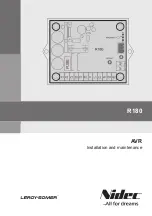
Last update: 2019/06/25 22:53 d2:spectroscopy_module_210 https://www.vescent.com/manuals/doku.php?id=d2:spectroscopy_module_210
https://www.vescent.com/manuals/
Printed on 2019/08/21 02:55
Fig. 2
Input light passes through an adjustable λ/2 waveplate and polarizing beamsplitter (PBS) that directs
a user-controlled portion of the beam to the vapor cells and detectors. (For the fiber-coupled option
the user will generally input most of the light.) The beam is then passed through a cleanup PBS and
split on a 50:50 non-polarizing beamsplitter (NPBS). One portion is then passed through a reference
vapor cell (Doppler subtraction option) or passed directly to the reference photodiode.
The remaining portion is passed through a fixed λ/2 waveplate and PBS to split off the pump beam
from the probe beam. The pump beam is directed to the Output Optics assembly where it is combined
with the probe beam on a PBS in a counter-propagating configuration. The pump beam is dumped
through the reflection port of the PBS that separated the pump and probe and terminates on the wall
of the housing. The probe is detected on the signal photodiode.
The beam diameters were designed to provide enough photocurrent (~50-100μA) to give shot-noise-
limited performance out to 5 MHz while limiting saturation broadening. For Vescent's DBR lasers, the
bandwidth is useful to provide for tight and stable locking by feedback to injection current.






























